Masdevallia ignea, commonly known as the Fiery Masdevallia or the Flame Orchid, is a striking species of orchid that hails from the high-altitude cloud forests of South America. Its vibrant red and orange flowers, resembling flames, make it one of the most admired species in the Masdevallia genus. In this article, we’ll explore the taxonomy, unique characteristics, habitat, care requirements, and cultural significance of this fiery beauty.
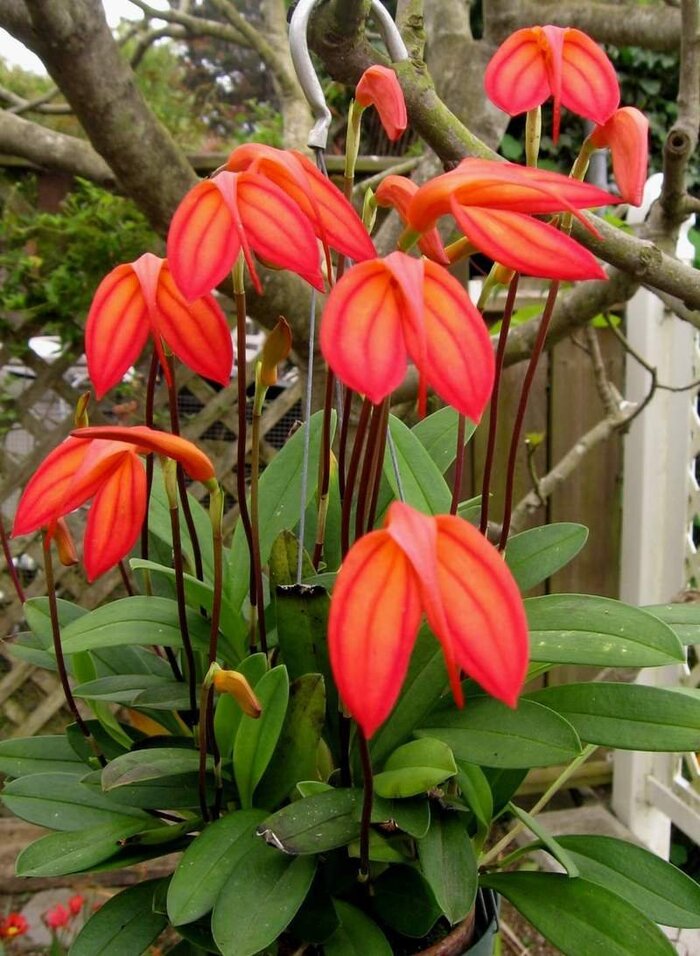
The Masdevallia ignea belongs to the Orchidaceae family, one of the largest and most diverse plant families in the world. This species is part of the Masdevallia genus, known for its unusual, often intricately shaped flowers.
Kingdom: Plantae
Division: Angiosperms
Class: Monocots
Order: Asparagales
Family: Orchidaceae
Subfamily: Epidendroideae
Genus: Masdevallia
Species: Masdevallia ignea
Native to the mountainous regions of Ecuador and Peru, Masdevallia ignea thrives in high-altitude cloud forests, where it enjoys the cool, misty environment.
The Fiery Masdevallia is renowned for its vibrant, flame-like flowers, which make it a highly sought-after orchid in the world of horticulture. Here are the most notable physical traits:
Flowers:
The flowers of Masdevallia ignea are striking, characterized by their vibrant red to orange petals that taper into long, slender tails, giving the flower a unique, flame-like appearance. The shape of the flower is tubular with three long, narrow sepals, which form an angular structure that extends outwards. These flowers usually measure between 2 and 3 cm in diameter, but their unusual shape and vivid color make them appear much larger in person.
Leaves:
The leaves of Masdevallia ignea are long, narrow, and leathery, typical of many species in the Masdevallia genus. They are deep green and arranged in a compact rosette, adding to the plant's overall elegance. The leaves grow in a basal cluster, and each leaf can reach up to 10-15 cm in length.
Size:
The plant itself is relatively small and compact. It typically grows to a height of 15-20 cm, with a similar spread. This makes it ideal for cultivation in smaller spaces or indoor environments, especially for orchid enthusiasts looking for a showy yet manageable species.
Masdevallia ignea is native to the cloud forests of Ecuador and Peru, typically found at altitudes ranging from 1,000 to 2,500 meters above sea level. These high-altitude areas are characterized by cool temperatures, high humidity, and frequent mist, creating an ideal environment for this orchid to thrive.
Preferred Climate:
Masdevallia ignea prefers a cool to intermediate climate, with daytime temperatures ranging between 18°C and 24°C (64°F to 75°F) and cooler nighttime temperatures around 12°C to 16°C (54°F to 61°F). These conditions are necessary to replicate the environment of the Andean cloud forests, where the orchid grows naturally.
Moisture and Humidity:
As a humid-loving plant, Masdevallia ignea thrives in environments with high humidity levels (around 50-80%). It also benefits from consistent moisture, though the roots must not be allowed to sit in water, as they are prone to rot.
Light:
This orchid prefers bright, indirect light. In its native habitat, it grows in shaded or dappled sunlight, often under the canopy of taller trees. Too much direct sunlight can scorch the delicate leaves, while too little light can stunt the plant’s growth and hinder flowering.
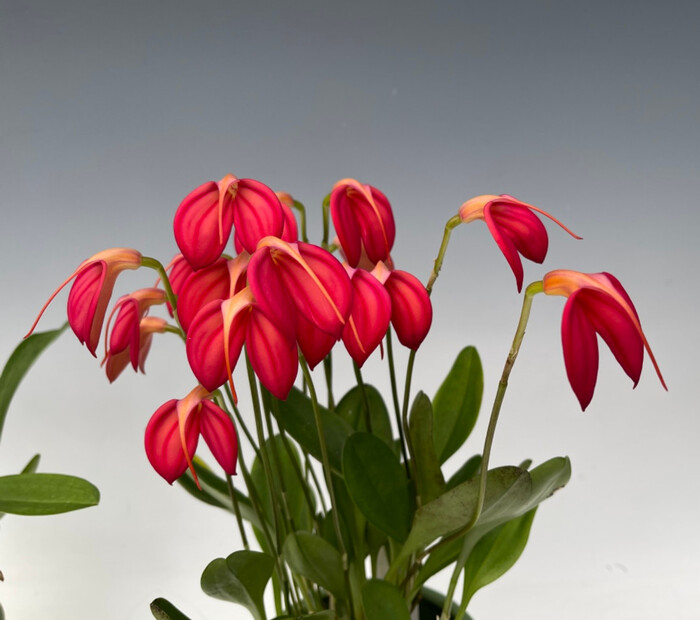
Cultivating Masdevallia ignea can be a rewarding endeavor for orchid enthusiasts, though it requires attention to detail and specific growing conditions. Here’s how you can provide the best care for this stunning orchid:
Potting and Soil:
The orchid should be potted in a well-draining, light orchid mix, such as a blend of bark, perlite, and sphagnum moss. The soil should retain moisture but not become soggy. It is crucial to use a pot with drainage holes to avoid water retention, which can lead to root rot.
Watering:
Masdevallia ignea requires consistent watering, but it’s important to let the medium dry slightly between waterings. Always water with soft or distilled water to avoid mineral buildup, as orchids are sensitive to the salts in hard tap water. Watering should be done in the morning to allow excess moisture to evaporate by evening.
Temperature:
This species thrives in cool to intermediate temperatures. Avoid placing the plant in hot or drafty areas. Maintaining a consistent temperature with moderate humidity is key to ensuring healthy growth and flowering.
Humidity:
Since Masdevallia ignea is native to humid cloud forests, it requires high humidity to flourish. Placing the orchid in a humidifier-equipped room or on a humidity tray can help maintain the right environment. It’s also recommended to mist the plant lightly in the morning if the humidity in the room is low.
Fertilization:
During the growing season (spring and summer), feed Masdevallia ignea with a balanced orchid fertilizer at half strength every 2-3 weeks. During the dormant period in winter, reduce feeding to once a month or stop entirely.
Repotting:
Repot the plant every 1-2 years, preferably after blooming. Orchids should be repotted to refresh the growing medium and to allow room for root growth. Be sure to handle the roots gently, as they are quite sensitive.
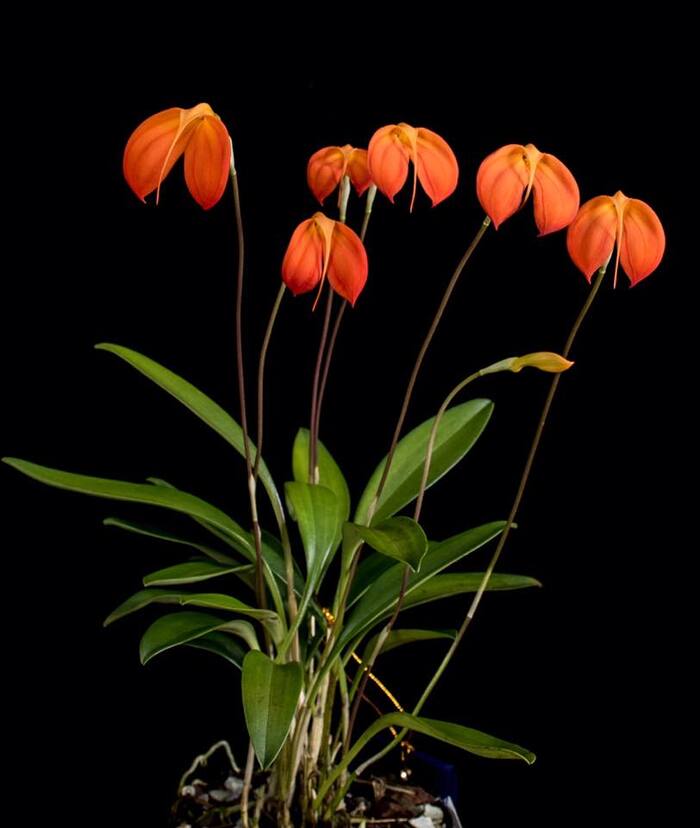
Masdevallia ignea typically blooms during the spring and summer months, although with the right care and conditions, it may bloom multiple times throughout the year. Its striking red-orange flowers usually last for about a week but can appear in succession, creating a long-lasting show.
Pollination:
In the wild, pollination of Masdevallia ignea is facilitated by small hummingbirds or insects, attracted by its vivid colors and nectar. The plant produces very small seeds that are dispersed by the wind.
Reproduction:
While Masdevallia ignea can be propagated by division (splitting the plant into smaller sections), it is typically grown from seed. Orchid seeds require a specific growing medium known as fungal symbiosis to germinate, which is why propagation from seed can be a complex process that requires specialized equipment and conditions.
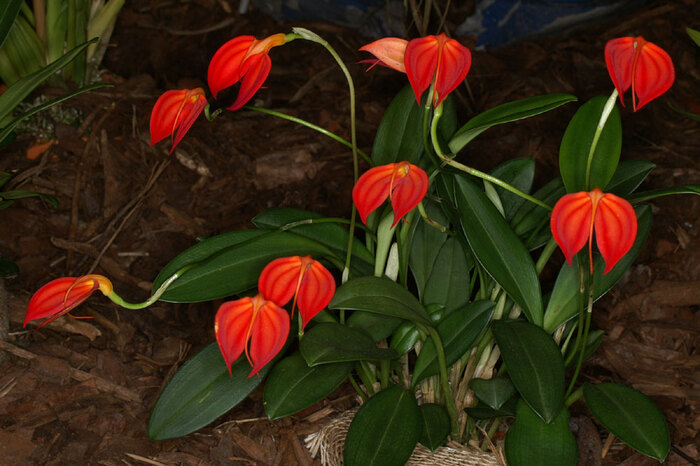
As a species native to the cloud forests of Ecuador and Peru, Masdevallia ignea plays an important ecological role in maintaining the biodiversity of these regions. Orchids, like all plants, are vital for local ecosystems, supporting pollinators like bees, butterflies, and hummingbirds.
In the world of horticulture, Masdevallia ignea is prized for its unique and vibrant flowers, making it a popular choice for orchid collectors and enthusiasts. Its stunning appearance has led to its use in decorative floral arrangements and as a focal point in botanical gardens.
Masdevallia ignea, with its breathtaking flame-like flowers and delicate structure, is one of the most striking species in the orchid family. Its bright red and orange hues make it a standout in any orchid collection, while its specific care requirements challenge but also reward those who nurture it. Whether you’re an experienced orchid grower or a novice plant enthusiast, cultivating this fiery orchid will undoubtedly be a fulfilling experience, bringing the splendor of the Andean cloud forests into your home.
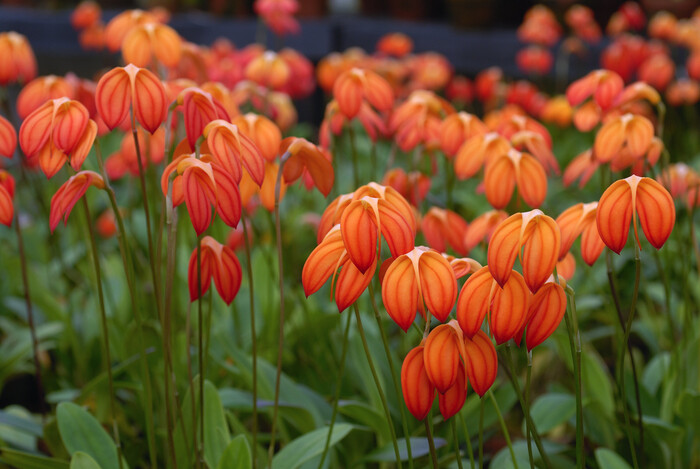
References:
“Orchids of South America,” Smithsonian Institute
“The Genus Masdevallia: A Study of Its Culture and Distribution,” Orchids Australia Journal
“The Complete Guide to Orchids,” 2022 Edition, Royal Horticultural Society
animal tags: Orchidaceae
We created this article in conjunction with AI technology, then made sure it was fact-checked and edited by a Animals Top editor.